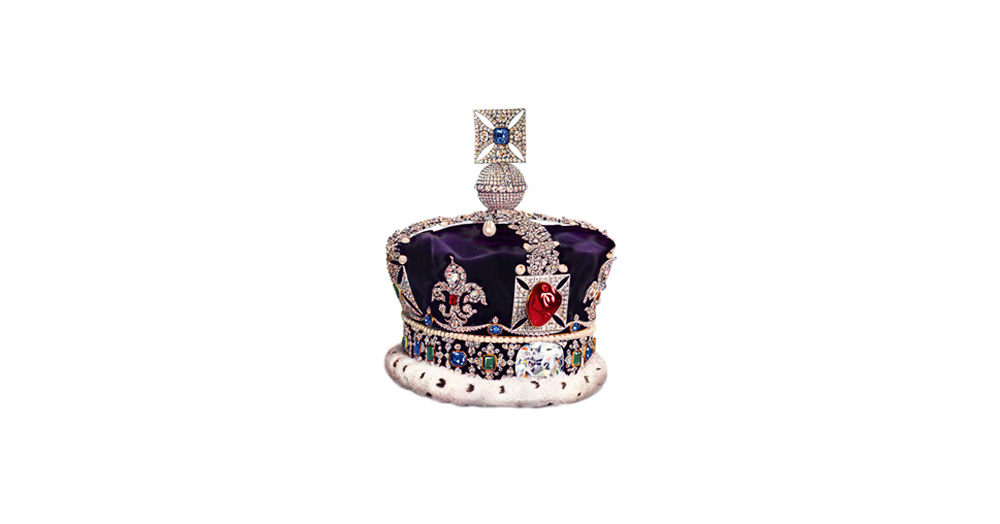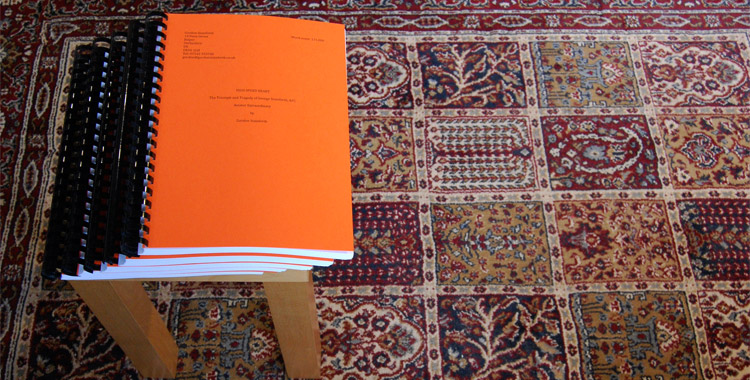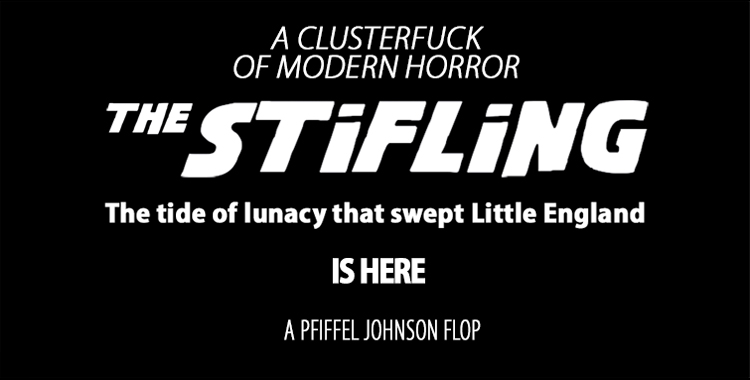Having touched on the question of style in my last blog about the elements of writing, I now want to consider it in greater detail. E.B. White, in the last chapter of The Elements of Style, turns to style in its broadest sense of what is ‘distinguished and distinguishing.’ By ‘distinguished’ he means ‘what ignites a certain combination of words, causing them to explode in the mind’ (in other words, ‘the sound the words make on paper’), while what is ‘distinguishing’ is the way they ‘reveal something of the writer’s spirits’. To take this second point first:
Creative writing is communication through revelation – it is the Self escaping into the open. No writer long remains incognito… Full of belief, sustained and elevated by the power of purpose, armed with the rules of grammar, you are ready for exposure.
William Zinsser (in On Writing Well) likewise stresses that writing non-fiction is a ‘personal transaction’, and that the most important quality a writer should strive for is ‘humanity and warmth’.
Intention is what we wish to accomplish with our writing. Call it the writer’s soul…. Writing is related to character. If your values are sound, your writing will be sound.
But he warns that to achieve this essential ‘aliveness … is not a question of gimmicks to “personalise” the author.’ To write with style does not mean ‘to embellish the plain words so that the reader will recognise you as someone special.’ To ‘reach for gaudy similes and tinseled adjectives … is like adding a toupee.’ The problem with a toupee is that the person wearing it no longer looks like himself.
You lose whatever it is that makes you unique. The reader will notice that you are putting on airs. Readers want the person who is talking to them to sound genuine. Therefore a fundamental rule is: be yourself…. Good writers are visible just behind their words…. Style is who you are.
Good writing, then, avoids the twin traps of being either too impersonal or too ornate. This means that the writer has to be continually aware of the narrow line that separates ‘eloquence from bombast.’
E.B. White similarly stresses that style is not a matter of ‘mannerisms, tricks, adornments … the approach to style is by way of plainness, simplicity, orderliness, sincerity.’ He then offers some basic tips, the most important of which (to summarise) are:
- Write in a way that comes naturally.
- Work from a suitable design … all writing has ‘a secret plan.’
- Write with nouns and verbs.
- Do not overwrite (guard against wordiness.)
- Do not overstate … ‘a single carefree superlative has the power to destroy, for readers, the object of your enthusiasm.’
- Avoid the use of qualifiers (rather, very, little, pretty) – ‘leeches that infest the pond of prose, sucking the blood of words.’
- Do not affect a breezy manner. (He makes the sobering warning that ‘a breezy style is often the work of an egocentric, the person who imagines that everything that comes to mind is of general interest.’)
- Do not explain too much.
- Avoid fancy words – ‘the elaborate, the pretentious, the coy, and the cute’.
- Be clear – ‘when you say something, make sure you have said it.’
White points out that occasionally more words are needed, and he gives the example of the opening lines of Lincoln’s Gettysburg address – ‘Four score and seven years ago’ – which was necessary for timing. Lincoln’s ‘ear’ told him it had to be this way, and ‘the question of ear is vital.’
White’s final warning is:
- Use figures of speech sparingly’ (e.g. avoid using too many similes and metaphors.) But that does not mean avoiding them entirely; in fact, what distinguishes all great writing is precisely the way in which the writer uses figures of speech.
Recently Mark Forsyth has written an excellent book on the subject, entitled The Elements of Eloquence (2013), which perfectly complements White’s The Elements of Style. In it he studies, in an extremely entertaining and witty manner, over forty figures of speech that are commonly used in the greatest writing. What comes across most strongly is his sheer love of the English language, and his appreciation of its beauty in the hands of the master craftsmen. ‘A figure of speech used well,’ he says, ‘is the beauty of language’, and he hopes that, if he has done nothing else, he has dispelled ‘the bleak and imbecilic idea that the aim of writing is to express yourself clearly in plain, simple English using as few words as possible. This is a fiction, a fib, a fallacy, a fantasy and a falsehood.’
Parataxis is like this. It’s good plain English. It’s one sentence. Then it’s another sentence. It’s direct. It’s farmer’s English. You don’t want to buy my cattle. They’re good cattle. You don’t know cattle. I’m going to have a drink. Then I’m going to break your jaw. I’m a paratactic farmer. My cattle are the best in England.
Forsyth (and Shakespeare) agree that this is not the best that we can do. ‘Practice rhetoric in your common talk,’ says Shakespeare.
I soon discovered, when reading Forsyth’s book, that I had used a number of figures of speech in my own ‘Fiva’ without realising it. The example about speaker attributions that I gave in my last blog – where I wrote “‘OK?” I said. “Yes,” said John’ – I now learned was a chiasmus, where the words of the first half are mirrored in the second.
I can’t resist an aside here. Forsyth says the reason we like a chiasmus is that human beings are fond of symmetry. Which is why we like palindromes. And he claims that ‘the only reason that T.S. Eliot insisted on the middle initial was that he was painfully aware of what his name would have been without it, backwards. For a short while, he became so paranoid that he decided to use his middle name instead and introduced himself as T. Stearns Eliot.’ Well I never knew that.
I also learnt that a figure of speech I’d used at the climax of Fiva was a whopping great litotes (a device that Orwell strongly disapproved of, incidentally) – which is saying something by denying its opposite. When I’m falling in huge bounces down a steep ice slope to what seems like certain death, I comment (in the present tense, because the whole book is written in the present tense): ‘It’s not unpleasant.’
The reason I think this is effective at this point is that it’s so unexpected. (Just as the sensation was at the time.) It’s also the only time I used a litotes in the entire book.
In my last blog I discussed the importance of rhythm, and this is something Forsyth takes a keen interest in. In a beautiful little chapter called ‘A Divagation Concerning Versification’, he points out that the main rhythm a writer should be aware of is the simple te-TUM te-TUM te-TUM te-TUM te-TUM of the iambic pentameter, which he calls ‘the Rolls Royce of verse forms.’ Because the TUM falls on the offbeat, the rhythm is like ‘waves lapping in the background.’ He points out that Shakespeare almost never used another verse form. ‘It was the iambic pentameter or it was plain prose…. In general, he has his heroes and his aristocrats natter away in iambic pentameters, but whenever the working classes come on stage they are forced to love, laugh and die in prose, because they’re common.’
Forsyth concludes this section by saying:
The iambic pentameter is the most natural form of English. It’s how the English language wants to be. And, in all seriousness, I didn’t even notice that that last sentence was one until I had typed it.
Of course the writer has to be very careful about using such rhythms in a self-conscious manner, because there’s always a huge risk of sounding pompous. We should never forget the scathing warning of Fowler (which I mentioned in the last blog) that ‘metrical snatches’ in a writer’s prose ‘are a sure sign that the fit is on him.’
This was not a warning that I had taken heed of even by the time I came to write the closing lines my third book, The Cuillin, in 1993. Zinsser would no doubt have dismissed it as bombast:
… For a magic hour the sun beams down on us and we move in a timeless state that is worth countless hours of normal life. Stronger for it, we continue to wend our problematic and precarious way through life, space walking on the edge of our dreams, with laughter in our hearts and as free as the winds of heaven.
The last phrase, though I didn’t realise it at the time, even managed to be an iambic pentameter. I must admit that my editor did not like either of those sentences, particularly the last, and I had a big fight with him. Originally the penultimate sentence was actually even grander than the final version, and I did the old film editor’s trick of throwing him off-guard by concentrating on that, and not on the last sentence. We spent so long arguing about it – with me eventually and deliberately giving way – that he completely forgot to discuss the last sentence. I later rather wish he hadn’t, because at the Banff Mountain Literature Festival in 1994 (where the book won the prize for the Best Book of Mountain Image), I had to read out that particular passage, and I remember that I nearly got the giggles when I came to the last two lines, so perilously near are they to a Ruskinian parody.
In passing, I should say that Ruskin remains one of the greatest masters of the English language. It is only a pity that in his greatest work, Modern Painters, he spoils almost every chapter in the closing paragraphs by climbing into the pulpit, as it were, with the most high-blown bombast imaginable.
For me, the most important aspect of euphony in writing remains its tempo and rhythm, and in this respect I think any book should be like a piece of music, with different movements and sections, having different tempi and styles to suit the content. Thus in the opening section of Fiva I try to convey the overwhelming scale and mysteriousness of the Romsdal landscape at dawn with some long, overwhelming ‘wispy’ sentences. How I experienced it on that memorable morning was of something immensely soporific, almost brain deadening:
There’s no sound at all, apart from an indeterminate burble of running water and the hiss of a thousand waterfalls. The whole ancient mountain landscape is steaming, as if the rock itself were breathing and coming to life, exhaling the smoke of an age-old energy at the dawn of yet another day, in yet another year, in yet another millennium …
… yet … yet … yet. It’s as if we’ve been hypnotised and are halfway between being awake and still asleep.
Then, when we are picking our way through through a wood of intensely tangled roots and branches, I try to convey this entanglement in the writing:
… It’s a chaotic, ramshackle entanglement of ancient birch, littered with boulders and rocks of all sizes that are matted with moss and criss-crossed with old roots and rotten branches that shower droplets on us as we push the smaller ones out of the way.
The height and width of the huge mile-high Troll Wall likewise has to be described in a huge, almost overwhelming sentence:
Directly facing us, blotting out the sky, is the great grey vertical sheet of the Troll Wall, a mile wide and a mile high, like an enormous defensive barricade fringed along its top with ferocious spikes to keep out any intruders, and completely blocking out any kind of mountain vista, or anything normal at all.
Then, when we are climbing a deep, claustrophobic rock ‘chimney’, I use a suitably long and claustrophobic sentence:
Like a couple of inquisitive beetles that have wandered inadvertently into a hidden crack and have nowhere to go but up, we are now deeply immersed in one of the mountain’s most secret crevices, clambering over, around, and sometimes under, huge chockstones – enormous boulders jammed in a near-vertical slimy cleft (in climbing terms, a “chimney”), reeking with damp moss. Crawling ever upwards into the very bowels of the dinosaur.
When everything is happening at hectic speed, and my thoughts are fragmented with sheer terror, the tempo has to be completely different again, and the writing fragmented:
The great weight, the hurtling mass of John’s body is twisting me round – twisting me – twisting me – pulling me down. Wrenching me down and round to my right.
When I hit a ledge and everything is brought to a shockingly abrupt halt, the style has to be even more fragmented, and staccato in brutally short sentences.
Rock hard. Stuck fast. Head first. Fixed in time. Pinned like an insect.
Of course, the problem with style is that it requires the writer to be quite daring, and sometimes the reader, and often the critics, misunderstand the intention. And sometimes even miss the point altogether. A particular stylistic problem I had with Fiva was to mimic the voice of a very enthusiastic (arguably overenthusiastic) nineteen-year-old. So a lot of qualifiers are left in. Again, I had quite a battle with the editors over this. In the end I did cut out a lot of verys (and one reader still thought I’d left too many in), but I had to retain a sufficient quantity to keep that over-eager tone.
Fortunately, I seem to have got the balance about right, because the book went on to win the coveted Best Book of Mountain and Wilderness Literature at the Banff Mountain Festival in 2012, and the judges citation read:
The breathless teenage voice that leaps off the first page never waivers. Not once. Rather, it becomes an unrelenting force, sweeping the reader ever higher on Norway’s Store Trolltind as events spiral out of control for two young, bold, and grossly inexperienced twins.
Of course, every book has to have its own voice, its own tone, just as each Beethoven symphony is utterly different from each other, a complete world of its own. (This will be the subject of another future blog.)
The writer must never be afraid of being daring and experimental. Providing it remains clear, the writing must be both entertaining and interesting to read. And that depends mainly on how interestingly it is written. At the end of the day, for me a book – fiction or non-fiction alike – can be about almost anything, so long as it is well written.
I am going to close with a passage from Dylan Thomas’s Under Milk Wood as a reminder of just how interesting the English language can be in the hands of a true master. It is so astonishingly rich and beautiful that it makes most of us struggling writers feel like mere beginners:
The sunny slow lulling afternoon yawns and moons through the dozy town. The sea lolls, laps and idles in, with fishes sleeping in its lap. The meadows still as Sunday, the shut-eye tasselled bulls, the goat-and-daisy dingles, nap happy and lazy. The dumb duck-ponds snooze. Clouds sag and pillow on Llaregyb Hill. Pigs grunt in a wet wallow-bath, and smile as they snort and dream. They dream of the acorned swill of the world, the rooting for pig-fruit, the bagpipe dugs of the mother sow, the squeal and snuffle of yesses of the women pigs in rut. They mud-bask and snout in the pig-loving sun; their tails curl; they rollick and slobber and snore to deep, smug, after-swill sleep. Donkeys angelically drowse on Donkey Down.




